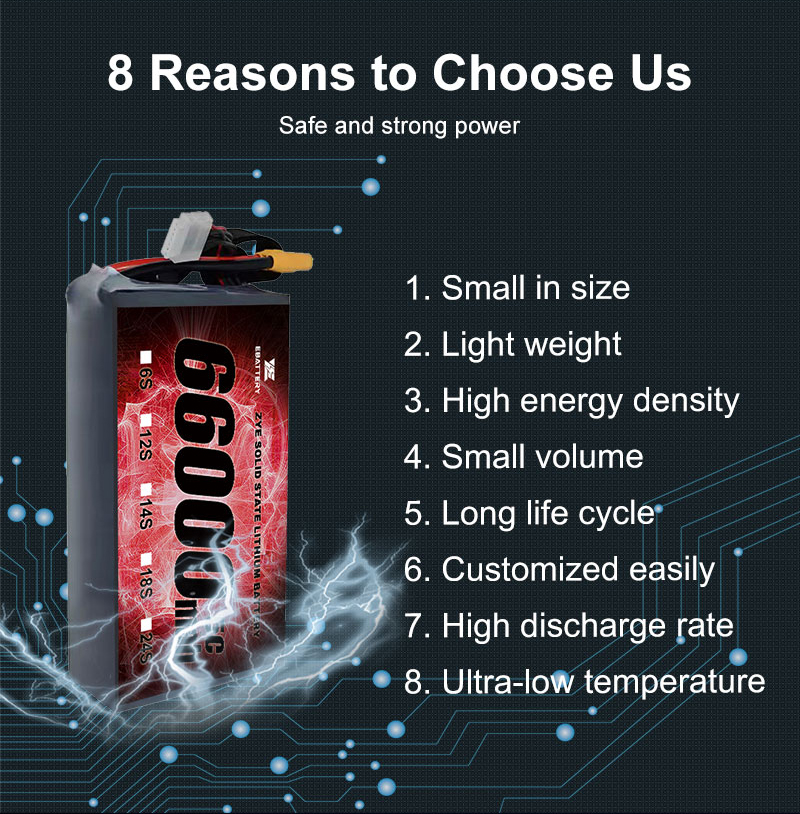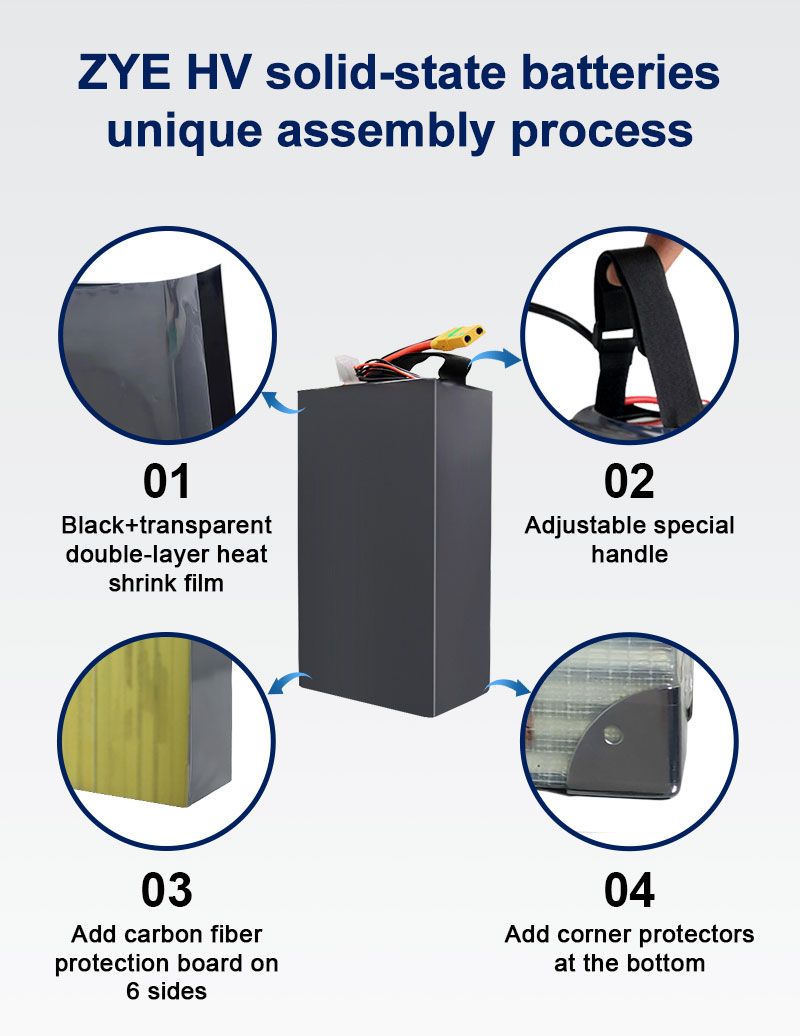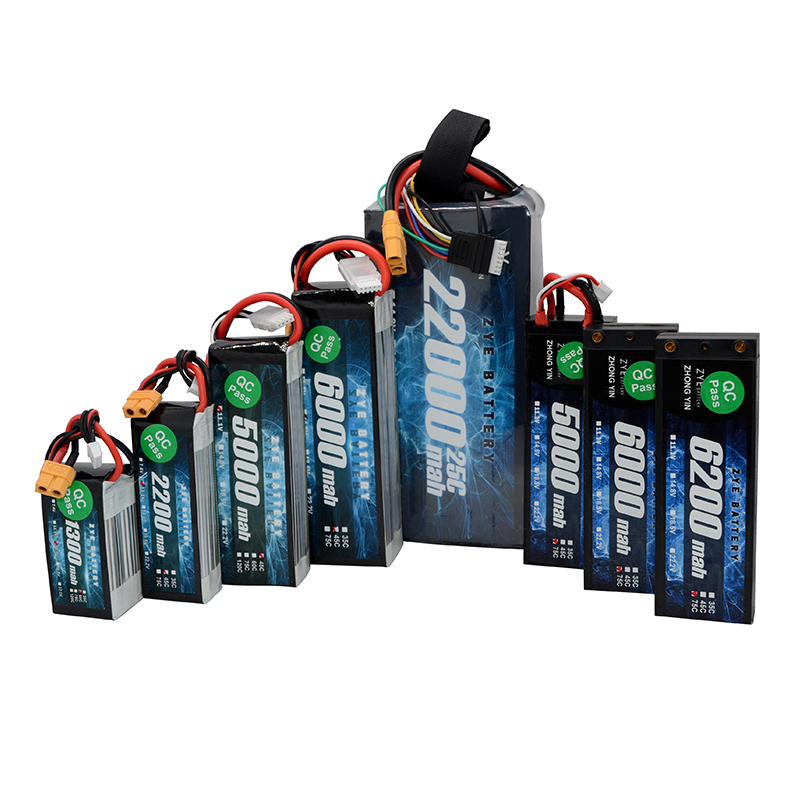How to safely revive a dead drone LiPo battery?
2025-08-26
LiPo batteries are the lifeblood of most drones, they deliver the high current needed for fast flights and sharp maneuvers, but their sensitivity to misuse or neglect often leaves them “dead” prematurely.
This guide will walk you through the process, from diagnosis to revival, while keeping safety front and center.

Why Do lipo Batteries Die?
Before jumping into revival, it’s critical to understand why LiPos fail:
1.Over-Discharge: LiPo cells are designed to operate between 3.0V (minimum safe discharge) and 4.2V (full charge). If a cell drops below 3.0V—especially below 2.5V—the battery’s chemistry degrades rapidly.
2.Cell Imbalance: LiPos are made of multiple cells (e.g., a “3S” battery has 3 cells) wired together. Over time, cells can charge/discharge unevenly.
3.Improper Storage: Storing a LiPo fully charged (4.2V per cell) or fully discharged (below 3.0V) for more than a week causes permanent damage.
4.Age & Wear: Even well-maintained LiPos degrade after 1000–2000 charge cycles. Old batteries lose capacity and become prone to failure.

Reviving a 6s-22000mah-lipo Battery: Step-by-Step Guide
1. Safety First
Before attempting to revive your battery, ensure you're in a well-ventilated area and have proper safety equipment, including safety glasses and gloves. Never attempt to revive a visibly damaged or swollen battery.
2. Check the Voltage
Use a multimeter to measure the voltage of your battery. A healthy 22ah lipo battery should have a voltage of around 3.7V per cell. If the voltage is significantly lower, it may be candidates for revival.
3. Slow Charging Method
Connect your battery to a balance charger capable of handling LiPo batteries. Set the charger to its lowest current setting, typically around 0.1A. This slow charging method can help reawaken the cells without causing damage.
4. Monitor Closely
Keep a close eye on the battery during the charging process. If you notice any unusual heat, swelling, or odors, immediately disconnect the battery and dispose of it properly.
5. Gradual Increase
If the battery accepts the initial charge without issues, gradually increase the charging current. However, never exceed the recommended charging rate for your specific battery.
6. Balance Charging
Once the battery shows signs of life, switch to balance charging mode. This ensures all cells are charged evenly, which is crucial for the battery's performance and longevity.
7. Test the Battery
After the charging process is complete, test the battery's performance in a safe environment. Monitor its voltage and capacity to ensure it's functioning correctly.

Prevent Future “Dead Batteries”: LiPo Maintenance Tips
1.Never Over-Discharge: Stop flying when your drone’s low-battery alarm goes off (most drones trigger this at 3.2–3.3V per cell). Never fly until the drone crashes from a dead battery.
2.Store at Storage Voltage: After flying, charge or discharge the battery to 3.8–3.85V per cell (use your charger’s “Storage Charge” mode). Store LiPos in a cool, dry place (not in a hot car or garage).
3.Charge Correctly: Always use a balance charger, and never exceed the battery’s maximum charge current (usually 1C–1.5C).
4.Rotate Batteries: If you have multiple LiPos, use them in rotation to avoid overusing one. Mark each battery with its purchase date and charge cycle count.
5.Check Regularly: Inspect 22000mah-lipo batteries for swelling or damage before every flight. Test cell voltages monthly if stored for long periods.
Conclusion
Reviving a dead drone LiPo battery is possible—but only if you prioritize safety and follow the steps carefully. Always start with a physical and voltage check, use a balance charger for low-current and balance charging, and never attempt to save a swollen or leaking battery.
Remember: A little care today keeps your drone (and your workspace) safe tomorrow.
For more information or to discuss your specific battery needs, please don't hesitate to contact us at coco@zyepower.com. Our team of experts is ready to help you find the perfect battery solution for your requirements.
























































